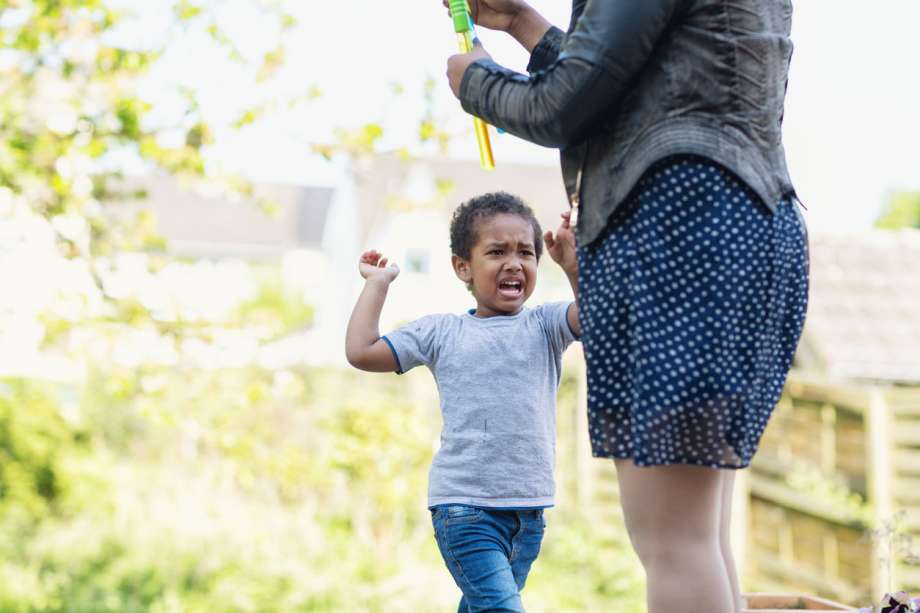How To Help Your Child During a Meltdown or Tantrum

Are you currently walking in the space in parenthood where your child is a tiny dictator, as fragile as egg shells and as unpredictable as New England weather? Have there been moments that you were convinced your sweet angel had actually been possessed by a demon? Do you find yourself wondering if your child will want this blue cup or that blue cup? Welcome to what we call Tantrumland. It’s a stop in toddlerhood that most families visit at least for a short period. Then again, some families stay here forever. Yes, that’s right, children whose family never move out of Tantrumland grow up to be adults who throw adult tantrums. Trust me, it’s a thing.
More: Taming Toddler Tantrums
When it comes to tantrums, there are many things to consider like your child’s age, their language development, safety, and the end goal. The way you react to tantrums should be based on individual children. Every child is different and they all deserve individual approaches to help support their emotional development in the best way possible for them. This means that children in the same family may require two different approaches to behaviors, rewards, and overall expectations. It seems counterintuitive since we’ve all grown up in a “keeping things fair” world, but children are the exception to this rule. Children require different approaches because they are all bringing different sets of skills and development to the table. Just like they are all throwing tantrums for different reasons and at different times.
The way we react to tantrums will help build (or destroy) a child’s emotional intelligence and their ability to process feelings in the future. This will impact their very existence: the way they interact with others, the characteristics they display as a partner to someone, and the way they parent your grandchildren (and so much more).The bad news is that over time, we can do severe damage to our tiniest of humans if we aren’t aware of our own adult reactions. The good news is that it’s hard to cause damage with one interaction—that means we get re-do’s and do-overs when we lose our cool and yell. However, just like in good ole’ Pac-Man, you only get so many do-overs. Be mindful of this and start building your toolbox of reaction for the next tantrum now...
1. Safety
The first thing you want to immediately evaluate is the safety of where your child has chosen to tantrum. Sometimes, they choose places like parking lots or airplane aisles to throw down. Unfortunately, neither of these situations are places that you can allow them to process their feelings where they are so you will need to pick them up and explain to them that you are moving their body to a safe place to feel [insert emotion].
2. Acknowledge what you see
If you can allow them to process where they are, I like to identify what I see and help them associate that with the feeling like such: “I see that you are so mad that we have to leave the playground. Your tears let me know that you are sad, too. It’s hard to leave somewhere that is so fun, but we can come back tomorrow.” If it’s a younger child, I might say something along the lines of “I know you are so sad to leave. We can come back tomorrow.”
3. Validate
You want to let your child know that what they are feeling is okay. You might even throw in a little “I feel sad, too, when I have to leave fun places. It’s okay that you are feeling upset.” Your primary job is to let them know that what they are feeling is okay and they are safe.
More: 6 Strategies to Help Prevent Meltdowns and Tantrums
3A: Redirect
If there’s a need to change their expression of this feeling (ie: biting, kicking, spitting, running away), you should explain this to them. Be aware that this should be done with their age and receptive language skills in mind. For younger children, the conversation might go something like, “I see you are very sad, but I won’t let you hurt your/my body.” For older children it may look like, “Remember, you can use your words to tell me how you feel,” or “I won’t let you make unsafe choices. You can tell me how you feel using words.” You can use simple language like, “I won’t let you bite me because it isn’t safe for my body,” or “I won’t let you kick your sister because it isn’t safe for her body,” too.
If you are unsure of what your child is feeling or have questions of if your child is experiencing abnormal reactions, your pediatrician is a great place to start, followed by a child psychologist.
4. Present choices
You can remind your child how they can express their feelings. You can say things like “You can tell me how you feel in a calm voice.” For older children, you can give your child deeper labels for their feelings like “You can say, ‘I am so frustrated’ ” (rather than simply mad) or “You can stomp really hard to get the mad out.” Sometimes this means stopping any unsafe or unwanted behaviors. If you need to stop your child from an unsafe choice like hitting, kicking, scratching, or biting, when you present the choices, you need to make sure that both are options you are okay with your child choosing. Your child needs to know (and come to expect) that all choices are truly on the table and safe choices to choose. This will also begin to build their subconscious toolbox. By hearing two choices, they choose one and store the other (it may take a few times of offering).
5. Walk away
If you are experiencing increased tantrums or more than a few weeks of tantrums without any decrease in frequency, it may be time to consider walking away from your tantruming child (as long as it is safe). Some kiddos still thrive from the interaction itself—negative attention is better than no attention way of thinking.
Tantrums are often inevitable as young kids begin to discover the world. This exploration will give your child a sense of wonder that will enable them to push all of your boundaries. You have a few choices to make when your babe begins to tantrum, but the most important one you face is whether or not you will react in an emotionally appropriate way or not.
Finally, let’s chat boundaries. Tiny humans enter toddlerhood with one main goal: test every boundary, always. When you pull up to Tantrumland, they give your child a quick dose of will power to carry this mission out with turbo fuel. Holding boundaries is one of the most important things you can do for your child. It is their job to test boundaries and you need to hold them safely and appropriately. Children crave boundaries and structure so they can know what to expect. I want to say it one more time, holding boundaries is one of the most important things you can do for your child.
Stay strong out there, parents! Tantrums, too, shall pass.
For more tips, tricks, and wisdom for living with toddlers, follow us on Pinterest:

